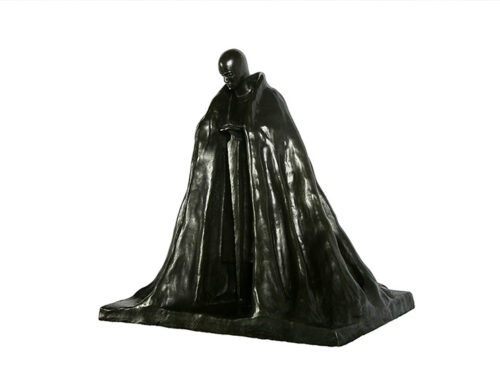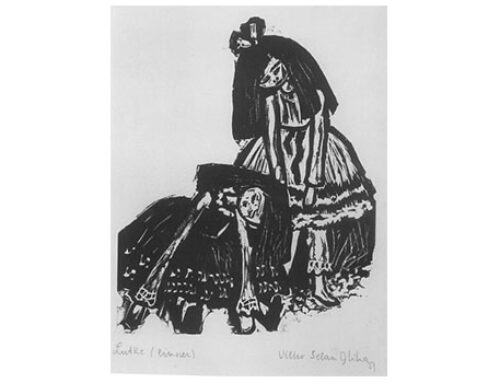Тhe Holy Family with St. John, Saint Catherine and donor, around 1526 is the work of the Venetian painter Jakopo Negretti, called Palma il Vecchio. The most prominent connection in the painting can be seen seen between the patron saint and the donor of the painting whom St. John the Baptist presents to the Virgin, as well as between the donor of the painting and the Holy Virgin and the little Christ. What is typicall for works by Palma Vecchio, as well as for this painting, is that the saints and the donor share the same space. The donor is, as usual, presented in the praying position, and this kneeling position shows a clearly defined hierarchy. The black clothes of the donor clearly distinguish him in the painting as a person of the other world. The idyllic landscape in the background with blue clouds in the distance and the green meadow on which herdsmen flock the herd, additionally complements the feeling of the timeless space in which the scene unfolds.
King Aleksandar I bought this painting from the Benson collection in London, with his personal assets in 1933, and it has been in a private collection at the Royal Compound ever since.
This painting, considered one of the most valuable works in the collection of the Royal Compound, was restored on the initiative of Crown Prince Alexander, and by joint efforts of Serbian and Italian experts between 2005 and 2006. The restoration made it possible, in addition to saving the image from decaying, to see the details of the landscape and the characters that had not been visible before.
Jacopo Palma il Vecchio was a Venetian Renaissance painter from a famous family of painters. It is assumed that he was Titian’s pupil, as well as of Bonifacio Pitati. He is known for introducing a completely new subject theme in art, the Sacra Conversazione theme. His works are distinguished by the vivid color and special treatment of light. He is also well known for his female portraits, among which the series in the gallery of Liechtenstein is particularly outstanding. He had a great influence on the later Venetian artists. His most important works include portraits at the National Gallery in London, the Adoration of the Magi in the Luvre, St Peter Enthroned in the Gallery of the Academy of Venice, etc.
















